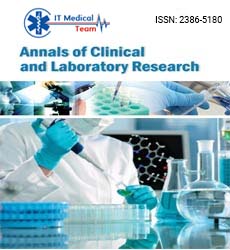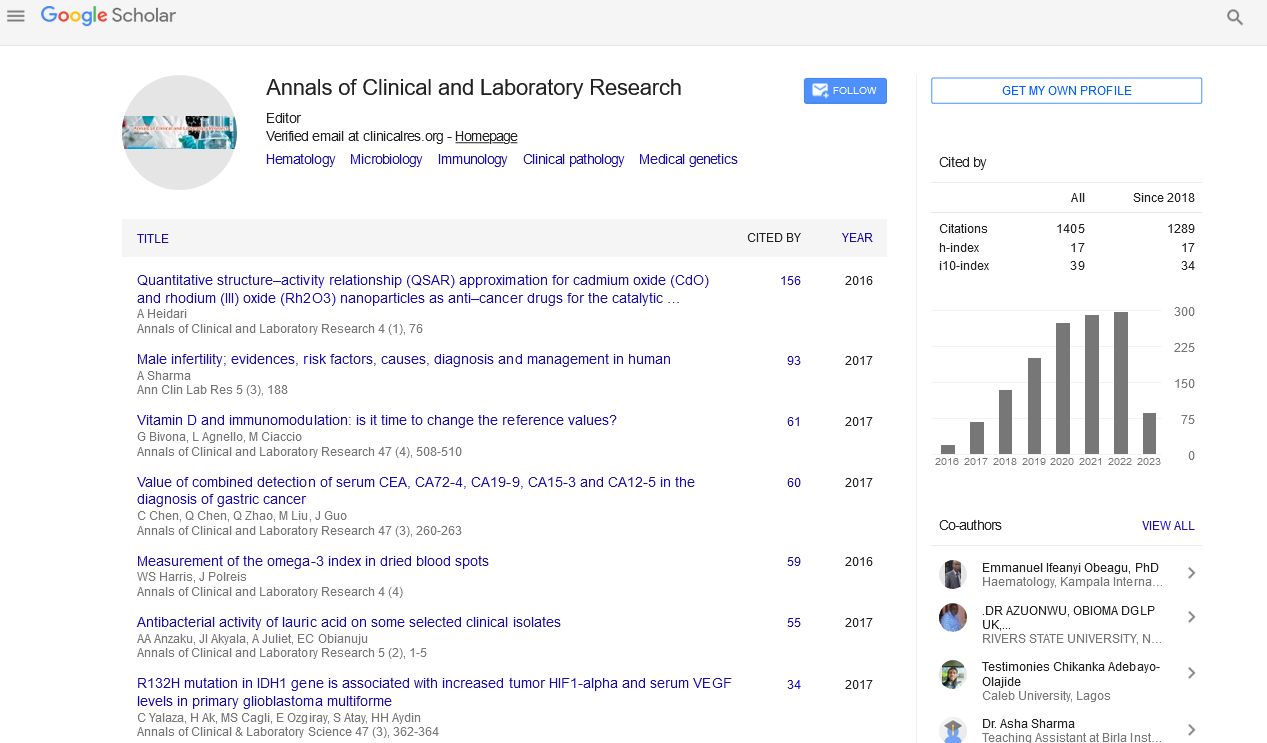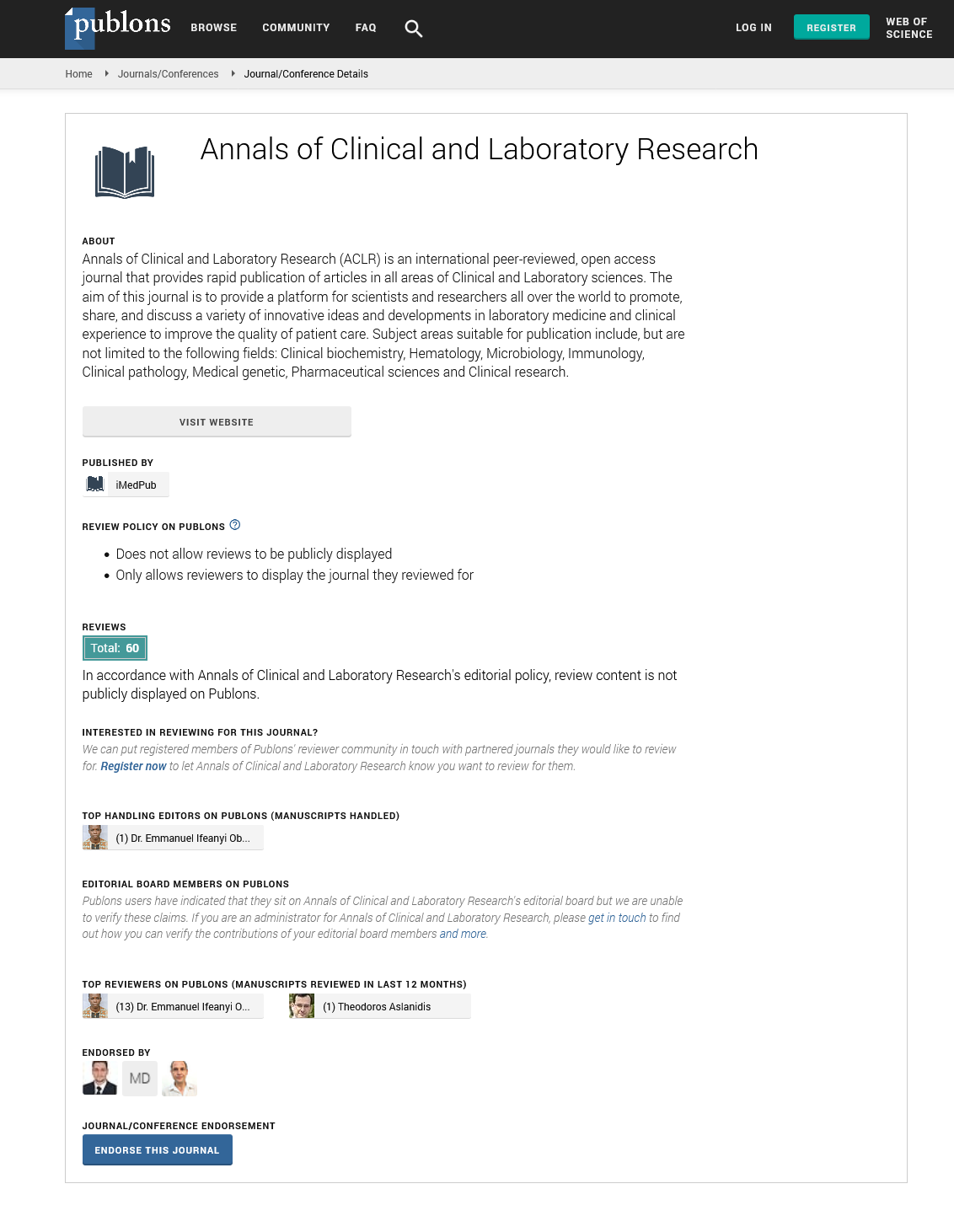Opinion - (2023) Volume 11, Issue 4
The Vital Flow: Understanding and Managing Blood Products in Clinical Practice
Louis Margolis*
Department of Chemical and Biological Engineering, University of Saskatchewan, Saskatchewan, Canada
*Correspondence:
Louis Margolis, Department of Chemical and Biological Engineering, University of Saskatchewan,
Saskatchewan,
Canada,
Email:
, Manuscript No. IPACLR-23-13924;
Published:
19-Jun-2023, DOI: 10.36648/2386- 5180.23.11.474
Introduction
Blood products are substances derived from human blood that
are used for medical purposes. They are essential in various
medical procedures and treatments, particularly in situations
where a patient's blood needs to be supplemented or replaced.
Blood products are typically obtained through blood donations
and undergo rigorous testing and processing to ensure their
safety and efficacy.
Whole blood: Whole blood refers to the collection of all blood
components, including red blood cells, white blood cells, platelets
and plasma. It is rarely used as a blood product in modern medical
practice.
Packed red blood cells (prbcs): PRBCs are prepared by separating
whole blood and removing most of the plasma and platelets. This
product primarily contains red blood cells and is used to replace
red blood cells in patients with anaemia or significant blood loss
[1].
Platelets: Platelets are small cell fragments involved in blood
clotting. They are often transfused to individuals with low platelet
counts (thrombocytopenia) or those at risk of bleeding due to
platelet dysfunction.
Fresh Frozen Plasma (FFP): FFP is obtained by separating and
freezing plasma from a unit of whole blood. It contains clotting
factors, proteins and other components necessary for blood
clotting. FFP is used in conditions such as bleeding disorders, liver
disease and certain coagulation factor deficiencies.
Cryoprecipitate: Cryoprecipitate is derived from FFP and contains
high concentrations of clotting factors, including fibrinogen, von
Willebrand factor and Factor VIII. It is commonly used in the
treatment of hemophilia and von Willebrand disease [2].
Albumin: Albumin is a protein found in plasma that helps
maintain osmotic pressure in blood vessels. It is often used to
treat conditions such as hypovolemic (low blood volume), burns
and certain liver diseases.
Blood products play a crucial role in clinical practice, serving as
a lifeline for patients who require transfusions due to medical
conditions or surgical procedures. Understanding the different
types of blood products, their indications and appropriate
management is vital to ensure patient safety and optimize healthcare outcomes. This article provides an overview of blood
products commonly used in clinical practice, emphasizing their
indications, storage, administration and potential risks associated
with their use [3].
Blood products encompass a range of components derived
from human blood, each serving specific therapeutic purposes.
Red Blood Cells (RBCs) are the most frequently transfused
blood product, primarily used to address anaemia and improve
oxygen-carrying capacity. Fresh Frozen Plasma (FFP) contains
clotting factors and is utilized in patients with bleeding disorders
or that requiring volume expansion. Platelets are essential
for clot formation and are administered to patients with
thrombocytopenia or impaired platelet function. Additionally,
cryoprecipitate, derived from FFP, is rich in fibrinogen, factor
VIII, von Willebrand factor and fibronectin, making it beneficial in
managing bleeding associated with certain coagulation disorders.
Transfusion of blood products should be guided by evidence-based
indications and individual patient assessment. RBC transfusion is
commonly indicated in patients with acute blood loss, chronic
anaemia, or inadequate tissue oxygenation. FFP is administered
to patients with coagulation factor deficiencies, liver disease, or
massive transfusions to correct clotting abnormalities. Platelet
transfusion is essential in individuals with thrombocytopenia,
platelet function disorders, or active bleeding [4].
While blood transfusions are often life-saving, they are not
without risks. Transfusion-related reactions can occur, ranging from mild allergic reactions to severe haemolytic or transfusionassociated
circulatory overload. Special attention must be paid
to preventing transfusion-transmitted infections, such as human
immunodeficiency virus (HIV), hepatitis B and C and bacterial
contamination. Proper blood product storage, handling and
compatibility testing are critical to mitigate these risks and
ensure patient safety.
Appropriate administration techniques are essential to
minimize complications and maximize the benefits of blood
product transfusion. Blood products should be administered
using dedicated administration sets and the infusion rate
should be adjusted based on patient tolerance. Vital signs and
clinical observation should be closely monitored during the
transfusion to detect early signs of adverse reactions, such as
fever, rash, respiratory distress, or hemodynamic instability.
Post-transfusion, laboratory monitoring is often necessary to
assess the effectiveness of transfusion and identify potential
complications. Monitoring haemoglobin levels, coagulation
parameters and platelet counts can guide further transfusion
decisions and ensure appropriate patient management [5].
Conclusion
Understanding and managing blood products in clinical practice is crucial for healthcare professionals involved in patient care. With
the diverse array of blood products available and the potential
risks associated with their use, proper indication, storage,
administration and monitoring are paramount. By adhering
to evidence-based guidelines and safety protocols, healthcare
providers can optimize patient outcomes and minimize the risks
associated with blood product transfusions.
References
- Dean E (2021). Novel Physical Therapist Lens on Developing a SARS-CoV-2 Vaccine:“Healthy Lifestyle Practices” Are Safe and Cost-Effective. Cardiopulm Phys Ther J. 32:S2-3.
Indexed at, Google Scholar, Cross Ref
- Dhabangi A, Dzik WH, Idro R, John CC, Butler EK, et al (2019). Blood use in sub‐Saharan Africa: a systematic review of current data. 59(7):2446–454.
Indexed at, Google Scholar, Cross Ref
- Kupesiz FT, Ocak S, Koc BS, Evim MS, Tufekci O, et al (2020). Evaluation of the knowledge of intern doctors on transfusion medicine in Turkey.
Indexed at, Google Scholar, Cross Ref
- Lipska KJ (2017). Metformin use in patients with historical contraindications. Ann Intern Med. 166(3):225-6.
Indexed at, Google Scholar, Cross Ref
- Tien H, Nascimento Jr B, Callum J, Rizoli S. (2007). An approach to transfusion and hemorrhage in trauma: current perspectives on restrictive transfusion strategies. Can J Surg. 50(3):202.
Indexed at, Google Scholar
Citation: Margolis L (2023) The Vital Flow: Understanding and Managing Blood Products in Clinical Practice. Ann Clin Lab Res. Vol.11 No.4:474






